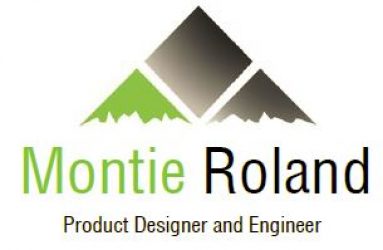What is a blog?
A blog is a specialized version of a website. Blogs allow users to concentrate on providing content (usually editorials) rather than worrying about the technical aspects of creating a web page.
Modern web publishing tools such as Microsofts Front Page allow just about anyone to compose relatively simple websites. Front Page has made the task of editing simple websites almost as easily as using Microsoft Word. Even though the software is straightforward to use, running a website requires the user to establish a web space to publish to, and to deal with the issues related to publishing to the web. These technical hurdles keep most people out of the web publishing business.
Blog software streamlines the process of web publishing. Websites such as Bloglines.com have streamlined workflows that allow users to quickly and cheaply (often free) create their own blogs. The combination of; the open source software movement, PHP (a scripting language on web servers), and MySQL (a database program, similar to Oracle) has allowed even low-budget websites to host blogs that reach huge audiences.
Why is blogging so popular?
Non-technical users can now easily create and maintain their blogs. The biggest cost of creating and maintaining a blog is the writers time. This allows writers to concentrate on creating their content. Bloggers can easily add text and pictures to their blogs. Once text and pictures have been added, or updated, that content is almost instantly available on the internet. Bloggers get the instant gratification of having their writing and images instantaneously available around the world.
Bloggers can also add content to their blogs from anywhere in the world. All they need is a computer with an internet connection. It is now common to see a press release saying ?He will be blogging from?. What this means is that magazines and other media outlets can have their bloggers add content while they are at venues such as trades shows, planned events, the scene of natural disasters, or even from their tent in Iraq. A good example is the proliferation of blogs written by soldiers from their duty stations in the Iraq war.
Readers can subscribe to one, or many, blogs, often for free. Subscriptions are maintained by aggregators. These aggregators allow the reader to tell the aggregator website which blogs they want to monitor. Some aggregators only monitor specific blogs (maybe only blogs they host). Other aggregators maintain directories of active blogs (this is common for podcasts). Subscriptions are much more convenient for the reader than having to visit the blog each day to check to see if there is new content.
One of the secrets of the success of the meteoric rise of blogs is the use of the RSS feed. Every blog has an RSS feed. RSS stands for ?Really Simple Syndication?. RSS feeds use a standard format to encapsulate the content of the blog. The use of the RSS feeds also allows the encapsulation of audio (podcasts) and video. From a broader perspective, its important to consider that RSS is as important to blogs as news services such as the Associated Press have been to traditional media. Make no mistakes, blogs represent a new media. The adoption of RSS feeds (and the subsequent support of these feeds by blogs and aggregators) creates a path for the distribution of blogs.
To put this in perspective there are three main ways to find a website on the internet. The first is to search for a topic, maybe through Google or Yahoo, and then visit a site that has information about that topic. Another way is to see, hear or be given a website address (maybe in print, TV, or radio) and then type in that address in Internet Explorer to go there. The third way is to see a link on another website or electronic document. You then click on the link and the website comes up.
Without RSS, most blogs would languish in obscurity as web pages that never got read. The aggregators now use RSS feeds to provide potential blog readers with choices of blogs to read. A good metaphor is to think of an RSS feed as a TV channel. For example you may turn to Fox to see a program on Thursday nights. RSS turns the blog (or podcast) into an outlet. Your computer can bring up the RSS feed and present you with the content of that channel. Combine this with the directories of blogs and podcasts that aggregators create and you have the equivalent of hundreds of thousands of channels, all on-demand. With the TV, you have to have TiVo, or a VCR, to record the programs that you miss. With RSS feeds, you can download the content and listen to it at your convenience. You can even search it.
Make no doubt blogs and podcasts represent a new media, both for entertainment and information. In the past, being ?media? meant massive investments in airspace, equipment, and personnel. Now one individual can sit at his, or her, PC and share opinions, thoughts, wisdom or knowledge just by sitting down and typing it into his computer and hitting ?upload?. Pictures, video and audio and are now easily integrated into blogs and podcasts. Just the ability to take a picture with your digital camera and have it passed through the RSS feed to thousands of subscribers is massive. This is a powerful tool, one which will affect the way we perceive the flow of information, thoughts and ideas for a long time to come.
Having a standard format allows aggregators to monitor blogs. The aggregators have programs visit (also called spider) each blog at regular intervals and check for updates. RSS feeds even contain a tag that suggests to the aggregator how often their blog is updated. This allows bloggers who update frequently to have their RSS feed checked more often.
Aggregators check the RSS feed by visiting the website hosting the blog and downloading the RSS feed. The potentially new RSS feed is automatically compared to the previously downloaded feed. Once new content has been detected, the aggregator then alerts any subscribers to the fact that the blog has been updated and new content is available. An example of an aggregator is www.bloglines.com. Other aggregators include:
www.blogwise.com
www.blogger.com
www.feedburner.com
www.newsgator.com
http://www.apple.com/rss/
Bloggers may also use a service like www.pingomatic.com to alert major aggregators if their blog has been updated more frequently that usual.
There are several ways an aggregator can alert subscribers to the presence of new blog content. The first way is through an e-mail. The subscriber receives an e-mail from the aggregator (or from the blog website itself) letting the subscriber know that new content is available. Bloglines uses a program (downloaded by the subscriber) running in the background on the subscribers machine. This program checks the RSS feeds from a list of subscribed blogs for new content. Once new content is available, the reader can visit the blog and read the new content. It is important to note that the software that downloads new podcasts (podcatchers) works essentially the same way.
There are also search engines that concentrate on blogs. A good example is blogsearch.google.com.
How do you create, publish and syndicate a blog?
There are two different ways to create a blog. The first is to go to a website that provides blogging services. These sites include:
www.bloglines.com
www.blogger.com
www.eponym.com
www.typepad.com
www.wordpress.com
Generally, creating your first blog is as easy as creating an account and starting to add content. However, many of these sites require you to agree to terms that include the reassigning all copyrights to the hosting site. This means that to use their services you may have to give them the rights to the content you are adding to your blog. This can be very important if you decide to reuse that content later (or you want to control how the content is used), since you may not own the content in your blog any more. This is one time that it is critical that you read the terms before you agree to use ?free? blog services.
The second way is to integrate blogging software into your website. This requires more skill and an on-line presence. There are several different ways to achieve the creation of your own blog. One is to use software that is built for the sole purpose of allowing the creation and maintenance of blogs. These may be written in CGI, Perl or PHP. PHP blog scripts often use a MySQL database. Most presence providers (such as www.powweb.com) support PHP and MySQL. Sources of blog scripts include:
www.hotscripts.com
www.outshine.com
www.sixapart.com/movabletype/index
www.wordpress.org/hosting/
At www.Montie.com we use a slightly different approach. We wanted to support an on-line community, as well as, a blog. The on-line community is powered by a script called PHPbb. PHPbb is available from www.phpbb.com. This is an open source script that is used on tens of thousands of websites around the world. PHPbb has spawned several widely used variants such as Post-Nuke. There is a good chance that any time you are looking at a forum on the internet, it is powered by PHPbb or a variant (such as Post-Nuke).
We then use a program called PHPBlog from www.outshine.com. PHPBlog allows all the topics on a specific forum to be posted as blog entries. Each time a reader visits the blog (www.montie.com/blog/index.php), the script searches the forum database to create the blog page and compiles the RSS feed.
We also use CuteFTP to move files around and to edit the script files. Unfortunately, in order to install PHP scripts you will want FTP software to upload files to your website and edit PHP files directly while you are installing and upgrading software. It is necessary to upgrade software as security issues are fixed. You can do FTP transfers (moving files to and from your website to set up and configure the PHP scripts) with Microsoft Internet Explorer. Many tasks can be automated with a program with CuteFTP and that is a huge time saver.
You will also need to be familiar with an image editor. The web gives you the opportunity to present full color images to the world at almost no cost. Once you have a blog and begin adding content, there is a good chance you will want to add pictures, sound (podcasts), and maybe video. Youll also need to create a banner for the top of your blog. Youll also need to do more mundane things like resize pictures that you want to show off on your new blog. There are a couple of tools that come with Microsoft Windows that work fairly well. There are also many image editing programs available commercially, and some even for free. Learning to use a simple one will be a huge help as you discover how a simple image from your digital camera can add to the power of your written words.
Once you have all of this set up, you will want to use tools like those available at www.pingomatic.com and www.feedburner.com to properly syndicate your site.
If you have any questions or comments about this article, Montie can be reached by e-mail at montie@montie.com, or you can visit his website at: www.montie.com. Montie is a consultant providing product design services. He is also the President of the NC/SC chapter of the PDMA (www.pdma.org/carolinas).



